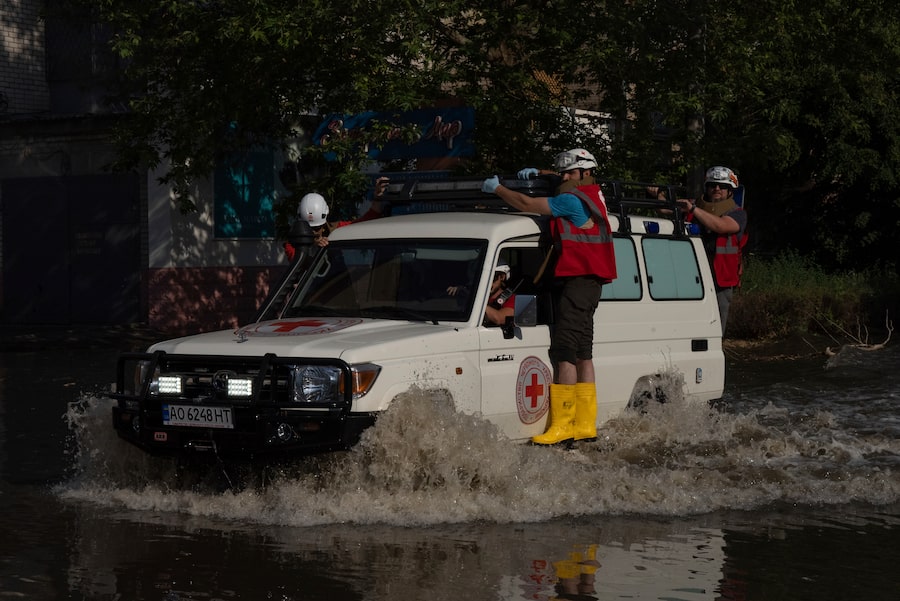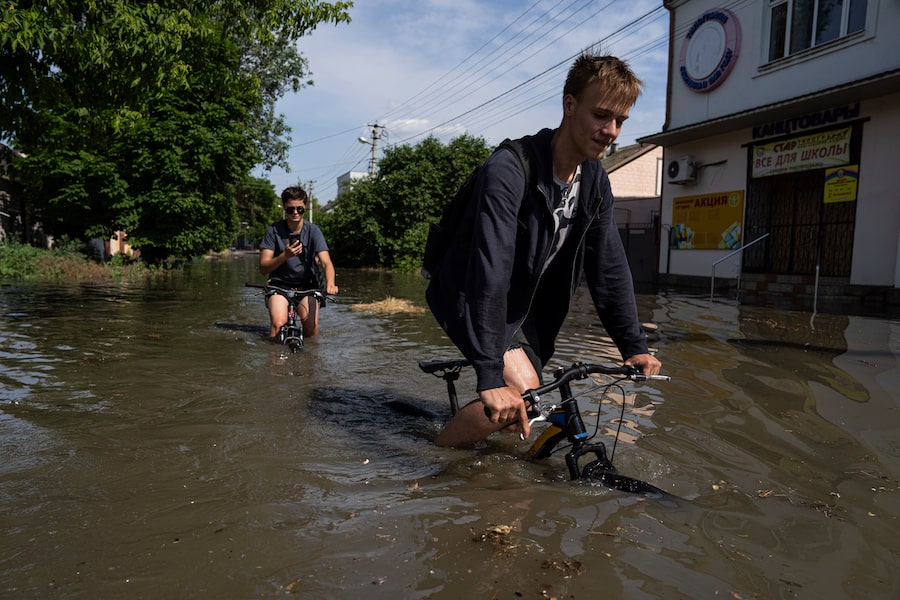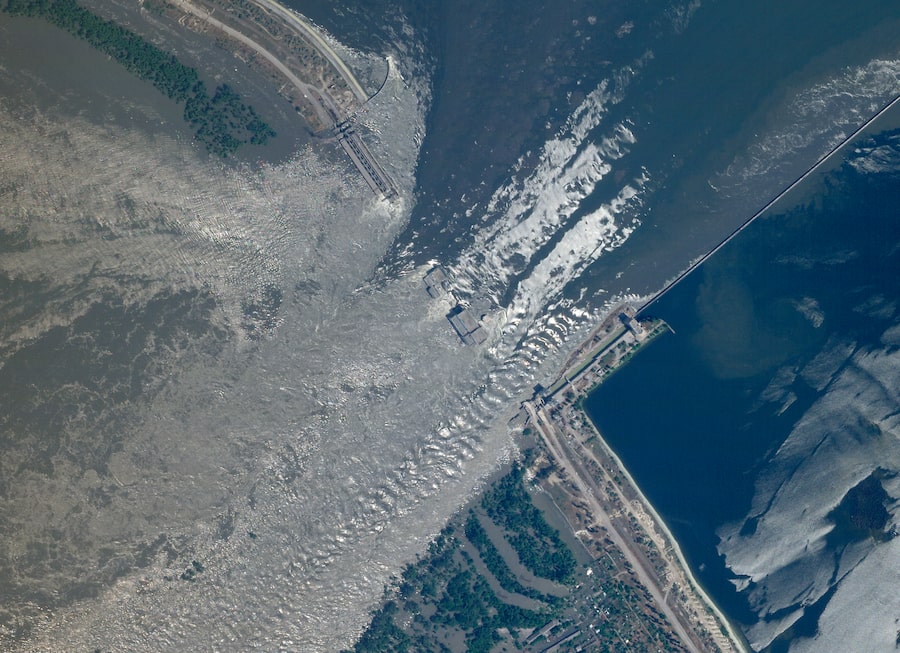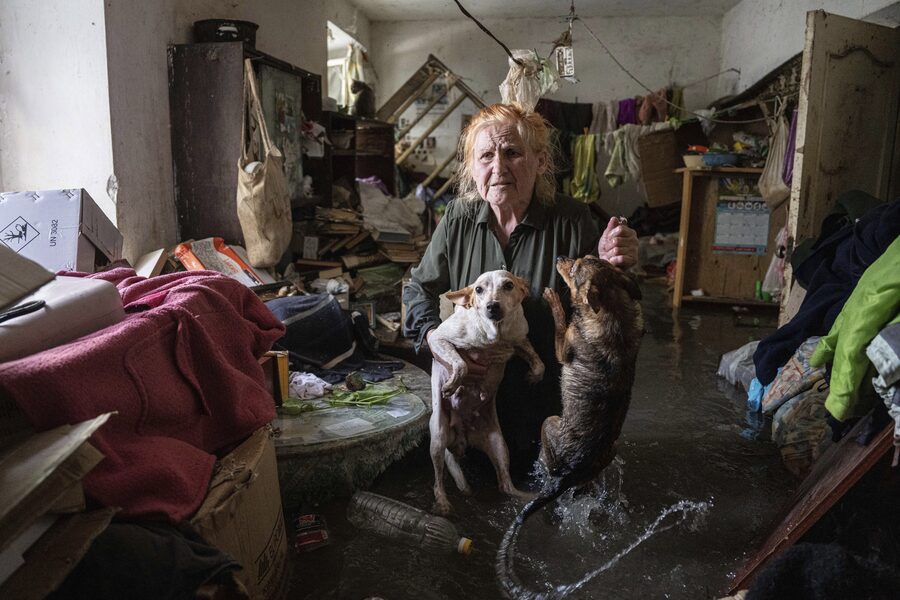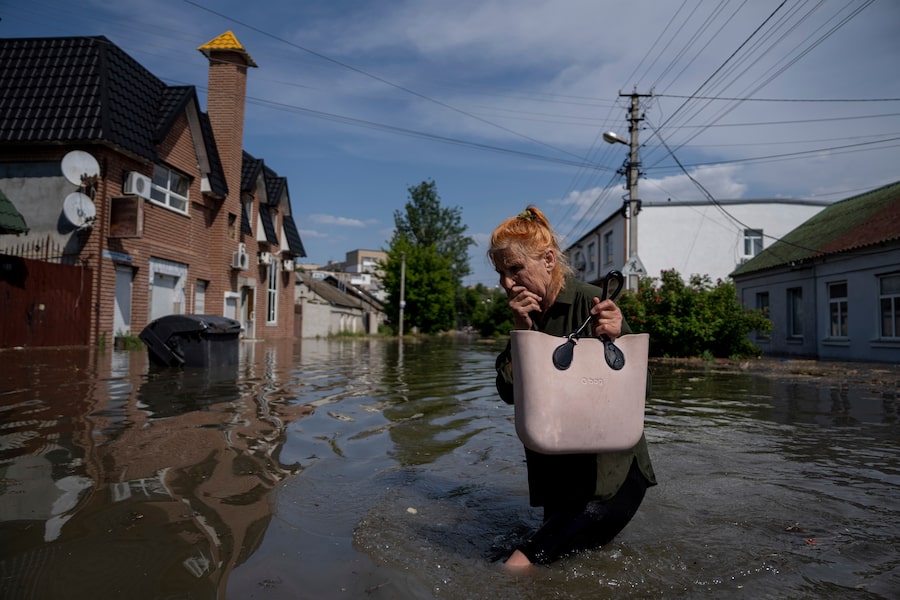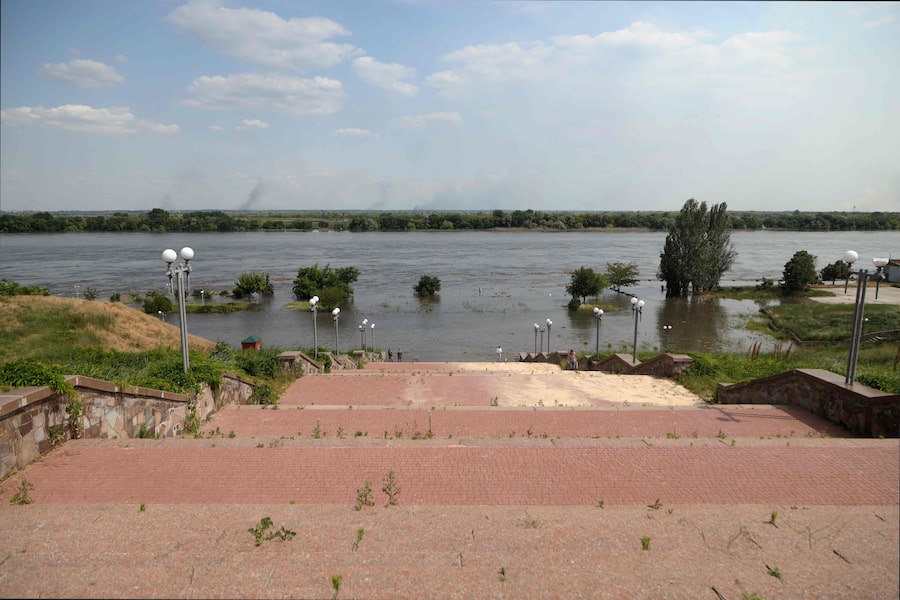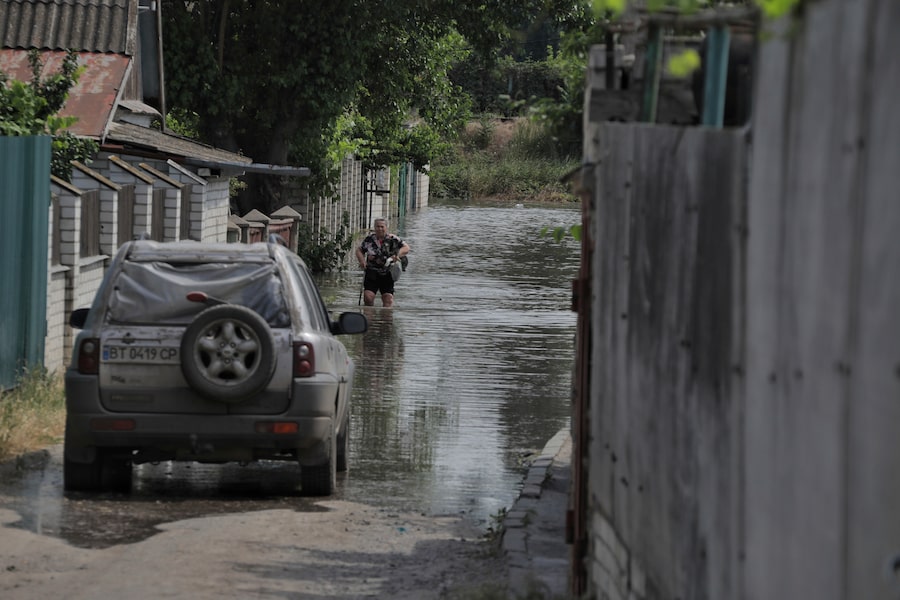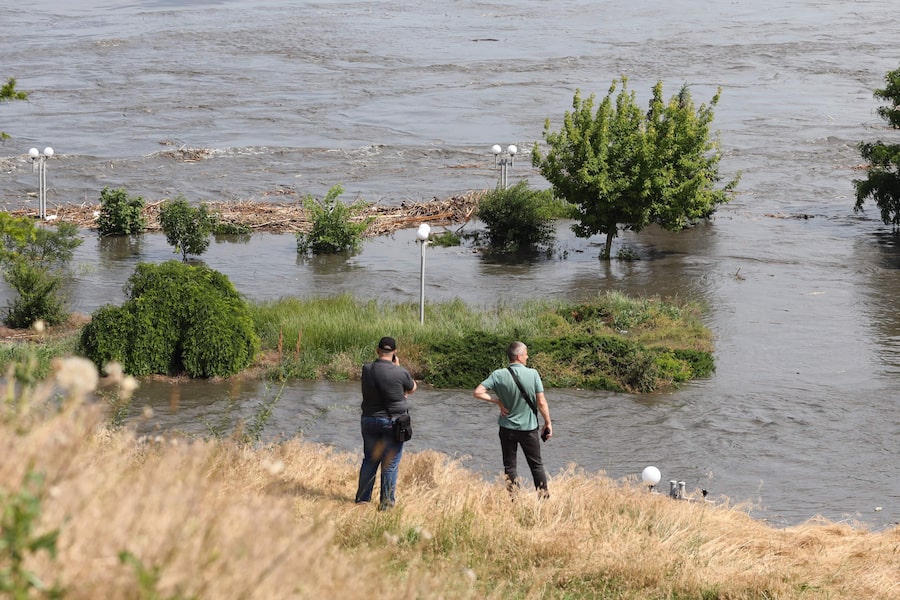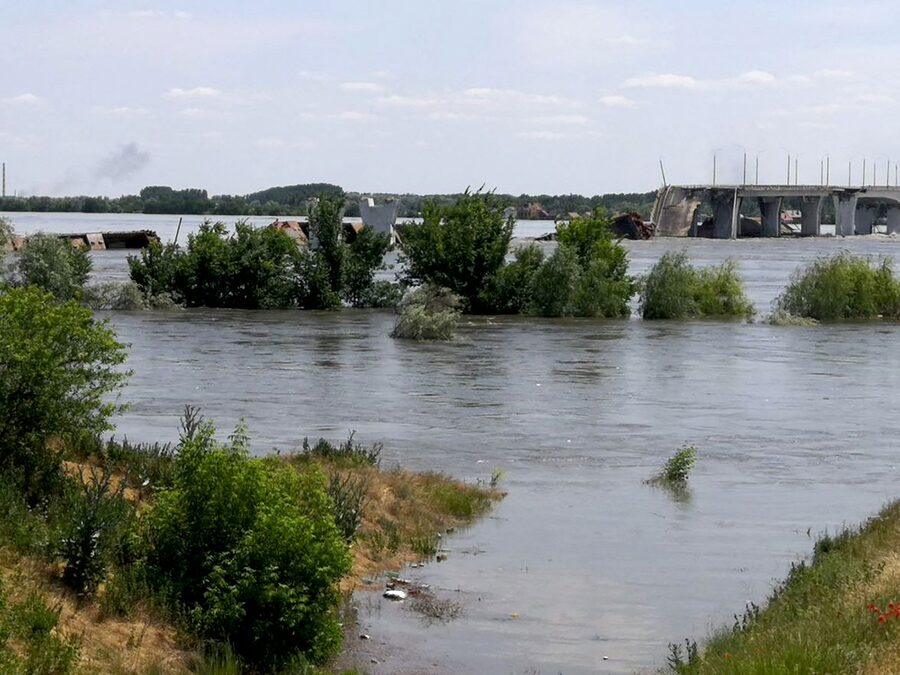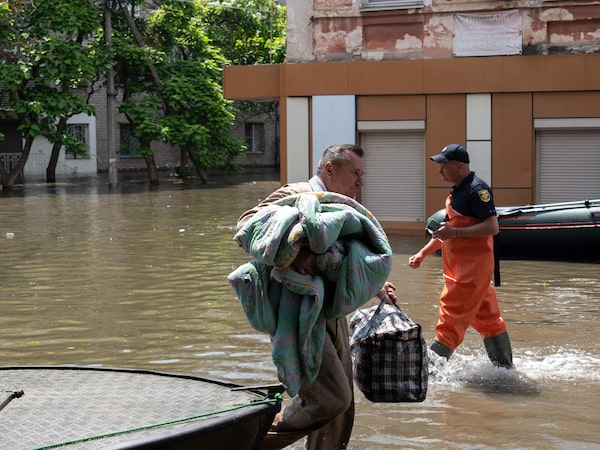
A local resident carries belongings during an evacuation from a flooded area in Kherson on June 7, 2023.ALEKSEY FILIPPOV/AFP/Getty Images
Ukraine warned of the danger of floating mines unearthed by flooding and the spread of disease and hazardous chemicals on Wednesday as senior officials inspected damage caused by the collapse of the vast Kakhovka hydro-electric dam.
Visiting the city of Kherson on the Dnipro river that bisects the country, Deputy Prime Minister Oleksandr Kubrakov said that over 80 settlements had been affected in a disaster which Ukraine and Russia blame on each other.
Blaming the dam’s collapse on Russia, Kubrakov said: “They did it in order to free up troops in this direction by flooding this bit of the front line.”
Russia, whose troops seized the dam soon after they invaded in February last year, has said Ukraine sabotaged the dam to distract attention from a counteroffensive it said was “faltering”.
“I can’t even speak now, I can’t collect myself,” said Lyubov Buryi, 67, who was evacuated from Kherson to a hospital on Tuesday with her 40-year-old son Roman.
“I’m of course awfully angry at (the Russians), I can’t even describe it … I don’t know what awaits us, our house seems to be destroyed,” she said.
Regional governor Oleksandr Prokudin said the water had reached a depth of 5.34 metres (17.5 ft) in some places of Kherson, though he said the rise had slowed and could peak by the end of Wednesday.
In Kherson, a large city about 60 km (37 miles) downstream from the destroyed dam, residents have set up makeshift embarkation points for dinghies that police, rescue workers and volunteers are now using to get around.
Kherson faces the Russian-controlled eastern bank of the Dnipro, and some residents have come under fire from Russian artillery as they go about their rescue and recovery work. The thud of artillery is heard almost constantly in the distance.
“Water is disturbing mines that were laid earlier, causing them to explode,” Kubrakov, dressed casually in a grey T-shirt, told reporters. As a result of the flooding, chemicals and infectious bacteria were getting into the water, he said.
He said Ukraine had allocated 120 million hryvnias ($3.25 million) allocated to secure the water supply in Mykolaiv, another southern city, and 1.5 billion hryvnias had been set aside to rebuild water mains systems ruined by the flood.
The chief doctor of a Kherson hospital, who asked not to be named because he did not want the hospital to risk retribution, said 136 people had been admitted for treatment because of the flooding. Many were elderly.
“These people had difficulties with their psychological state. These are usually older people. (Some of) these people have chronic illnesses which could get worse,” the doctor said.
Ukrainian authorities have evacuated people from 24 flooded settlements and at least 20 settlements are flooded on territory occupied by Russian forces, Kubrakov said.
“We see that the occupation authorities are not evacuating people,” he said, calling for the United Nations and the International Committee of the Red Cross to help evacuate flood victims in Russian-occupied regions.
Kherson, a city of 279,000 before Russia’s full-scale invasion in February last year, was occupied by Russian forces for over eight months until November.
Kubrakov said the water level in the city had risen by 12-16 cm an hour on Tuesday but was now rising at one-two cm an hour.
“It’s one of the most terrifying terrorist acts of this war,” he said.
